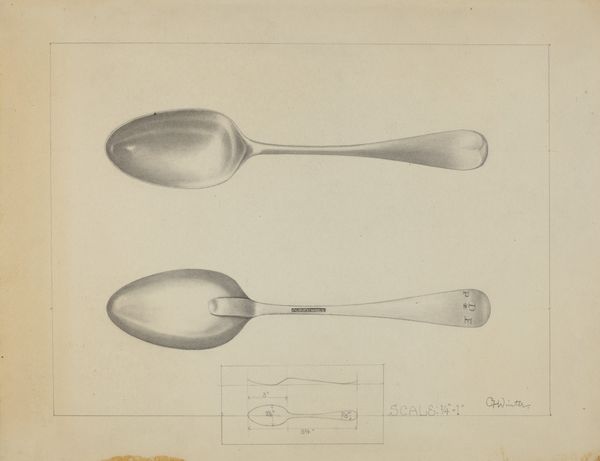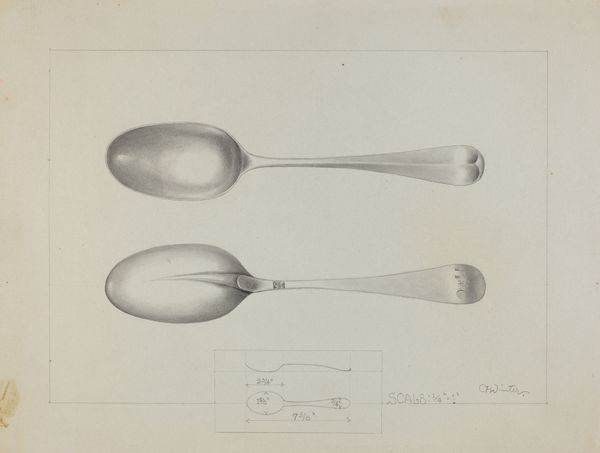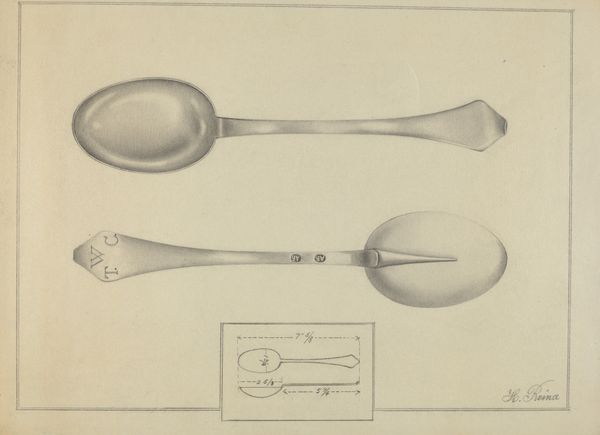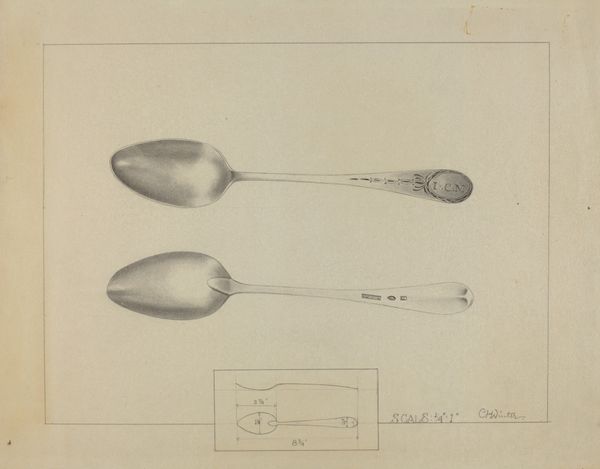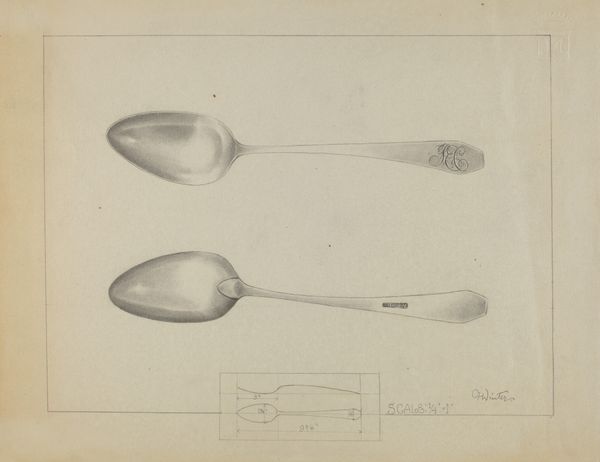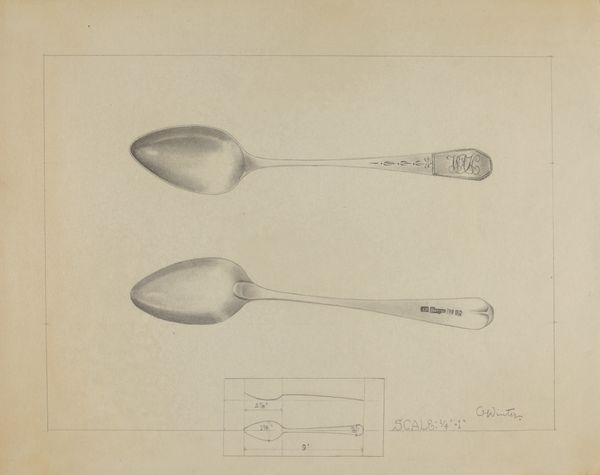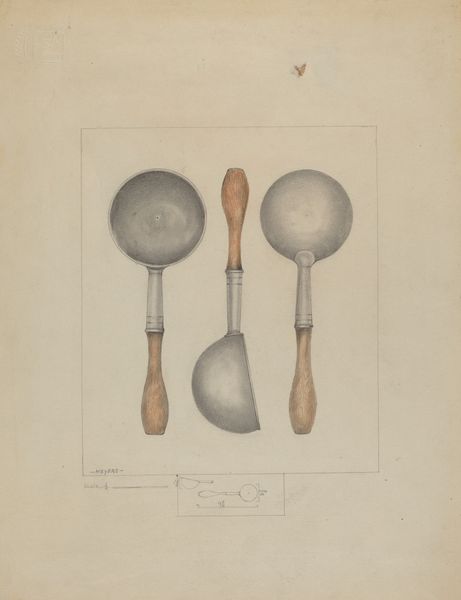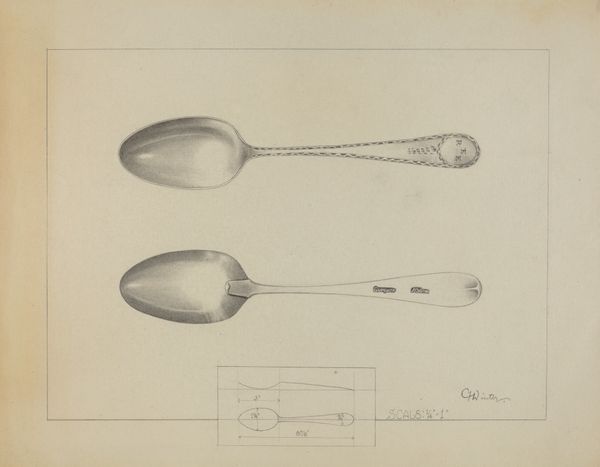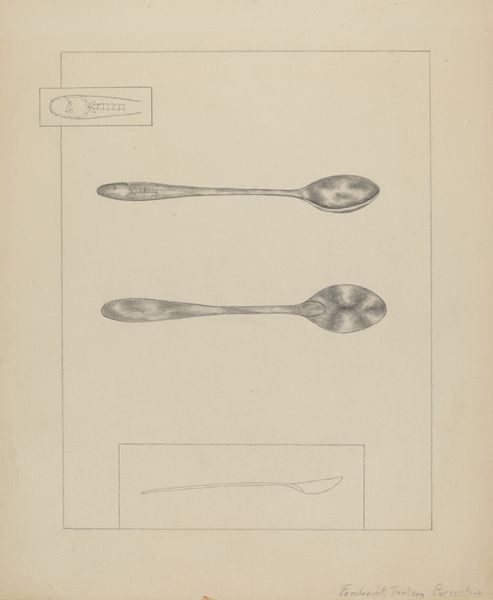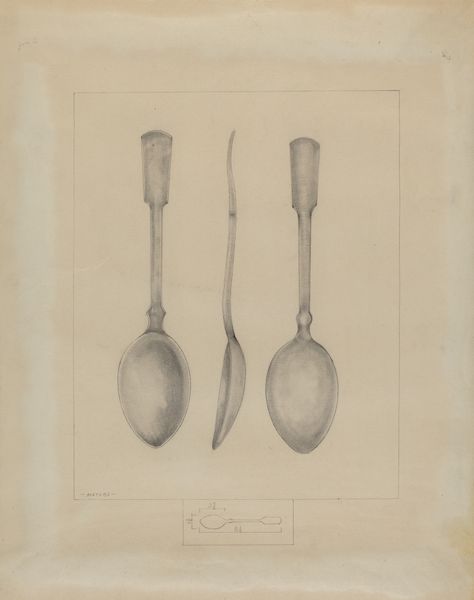
drawing, graphite
#
drawing
#
graphite
#
realism
Dimensions: overall: 29.9 x 22.9 cm (11 3/4 x 9 in.) Original IAD Object: 7 1/8" long; 1 3/4" wide
Copyright: National Gallery of Art: CC0 1.0
Curator: Looking at "Pewter Spoon," a graphite drawing crafted around 1936 by Karl Joubert, I am struck by the interplay of form and shadow. The artist meticulously renders three views of a simple spoon: a side profile, a top-down view, and a cross-section of the handle. The subtle gradations of graphite capture the cool, smooth texture of pewter. Editor: My first impression is one of quiet domesticity. The spoon, a seemingly unremarkable object, is elevated here. What narratives can be extracted from something so ordinary, so ingrained in the history of everyday life and perhaps the construction of class and social structures around mealtime rituals? Curator: Precisely. Considering the period in which Joubert made this drawing, the 1930s, we might think about the impact of mass production on such everyday objects. It perhaps becomes an almost nostalgic meditation on utility. It reflects the social context of domestic labor and material culture during the Great Depression and maybe questions capitalist ideals? Editor: You raise fascinating points. Visually, the spoon offers us form in its purest sense: its graceful curvature, its handle's linear precision. Notice how Joubert employs subtle shading to model its shape, giving volume, depth, and a certain weightiness to the metal. He captures, essentially, its realness, or material essence. Curator: The formal austerity, paired with its realistic rendering, suggests to me something of a document, an inventory even. Joubert offers a detailed rendering of a common object—the spoon becomes a potent symbol when read as part of a broader narrative of sustenance, class, and domestic labor, particularly when situated in its social moment. Editor: And the humble spoon provides an exercise in form. The careful depiction—down to the artist’s clear understanding of reflective planes—can almost exist divorced from sociohistorical meanings, revealing only the geometry and elegance embedded in a commonplace object. Joubert highlights form, yes, but the meticulous details draw out considerations around the role of craftsmanship itself. Curator: I see, and to consider its making in the context of design and industrialisation of manufacture, its historical moment of production gives resonance to these subtle textures. Editor: Yes, it becomes quite clear. It really all comes back to the drawing's unique material properties: the use of line and texture and shape, that reveal all these possible interpretations. Curator: Ultimately, "Pewter Spoon" demonstrates how even the most ordinary objects, seen through the lens of both formal analysis and social context, become richly meaningful artifacts. Editor: I concur! By attending to both intrinsic qualities and extrinsic associations, our engagement with the drawing truly transforms it.
Comments
No comments
Be the first to comment and join the conversation on the ultimate creative platform.
